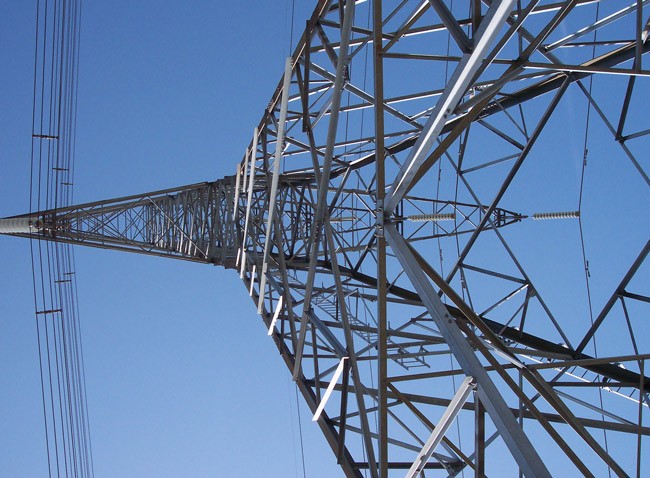
Florida Power and Light, Florida’s largest electric utility and Flagler County’s almost exclusive provider of power, on Thursday reported fourth quarter profits of $365 million, and 2015 profits of $1.648 billion.
Both figures are significant improvements on 2014. Fourth-quarter profits rose 28 percent compared to the $286 million earned a year ago, and full-year profits rose 8.6 percent over 2014’s profits of $1.517 billion.
For all that good news for FPL’s shareholders, the company’s 4.8 million customers in Florida won’t see a direct effect on their bottom line. Rather, FPL has filed a request with the Florida Public Service Commission for a rate increase of 15 percent by 2020 for the average residential power user.
“The Company is currently operating under a four-year rate settlement agreement that began in January 2013 and expires at the end of December 2016,” FPL President and CEO Eric Silagy, wrote Julie Brown, chairman of the Public Service Commission, on Jan. 15. “The amount of the base rate request has not been finalized; however, our preliminary estimate is a general base revenue [increase] of approximately $860 million effective in January 2017; a subsequent year [increase] of approximately $265 million effective in January 2018; an [increase] of approximately $200 million effective when the new Okeechobee Clean Energy Center enters service in mid-2019; and no base increase in 2020.” (Corporations typically substitute the blander but less accurate word adjustment for increase in company documents.)
“For the typical residential 1,000 kWh bill, we estimate that the 2017 base rate [increase] would be about $8.50 per month,” Silagy continued. “The subsequent year base rate [increase] in 2018 would be about $2.50 per month, and the Okeechobee Clean Energy Center limited scope base rate [increase] would add about $2.00 per month in 2019.”
FPL’s average bill is lower than the state and national average, but not as much as it claims.
He noted that FPL’s typical residential bill today is 20 percent lower than the state average and 30 percent lower than the national average. But that’s somewhat of an exaggeration. The average price in cents of a kilowatt hour for residential users from Florida’s 44 public and private utilities (excluding two utilities with fewer than 225 customers) was 12.90 cents in 2014, according to the U.S. Energy Information Administration. FPL’s average residential cost was 11.06 cents–a still-healthy 16.6 percent break in FPL’s favor. The national average is 12.52 cents, which yields only a 13.2 percent improvement in FPL’s favor–nowhere near the 30 percent lower rate Silagy claims. (FPL routinely repeats similarly inaccurate claims in its releases.)
The base rate is not the final rate consumers actual pay. That final rate takes into account the increase or decrease in the price of fuel, which utilities are not allowed to use as a money-maker (nor are they penalized when the price of energy rises). Taking those costs into account, FPL expects an annual overall rate increase of 2.8 percent for the typical residential user–still adding up to close to the 15 percent increase by 2020.
Aside from six quarters during the depth of the Great Recession, FPL has added customers statewide at a rate of 20,000 to 40,000 per quarter from the latter part of 2010 to the early part of 2014, rising to more than 60,000 customers per quarter since. In 2015, FPL saw an overall increase of kilowatt per hour sales of 1.5 percent in its customer base, and a power-usage increase of 4.4 percent due to weather.
Since 2013, the company says it has invested $15.8 billion “in smart, efficient infrastructure including $6.7 billion on new and upgraded transmission and distribution facilities,” Silagy wrote. The company aims to maintain its record of reliability while expanding clean-energy power plants. “Since 2001, FPL’s investments in high-efficiency natural gas energy have saved customers more than $8 billion on fuel – fuel that did not have to be purchased as a result of our cleaner, more efficient fleet – and prevented 95 million tons of carbon dioxide emissions, equivalent to removing more than 18 million cars from the road for one year,” Silagy wrote.
FPL is a subsidiary of NextEra Energy, which reported net income $2.8 billion for the full year Thursday, or $6.06 per share, compared to $2.5 billion, or $5.60 per share, in 2014. “During the fourth quarter of 2015, retail sales increased 11.7 percent, compared to the prior-year comparable quarter, driven by continued customer growth and weather-related usage per customer,” a release issued by NextEra stated.
![]()
FPL CEO Eric Silagy’s Letter to the Public Service Commission.
Click to access fpl-psc-letter-rate-increase.pdf





























Layla says
I’m sorry, but I think this is wrong….especially now. If all levels of government cannot seem to understand that the blood has been squeezed out of the turnip, well, then maybe it’s just time for a clean slate at all levels.
Reelect nobody. You certainly don’t reward people for this. These guys certainly seem to find enough money to handsomely pay state and federal lobbyists.
YankeeExPat says
Follow the Money Train and your suspicion will be justified.
Did political contributions win tax breaks for FPL and others?
Inside Vero January 19, 2016
insidevero.com/…/did-political-contributions-win-tax-breaks-for-fpl-and..
rst says
Go solar…
BeachcomberT says
With the dramatically lower oil prices that we’ve enjoyed for the past year, I wonder when FPL will get around to lowering its fuel adjustment charge.
steve miller says
STOP THE MADNESS!
confidential says
Stop the nonsense of allowing a company that made 1.65 billion in the last year to raise our rates!! What is the Florida Utilities Commission good for…they are supposed to defend the consumers and not these wealthy greedy corporations!